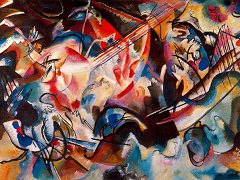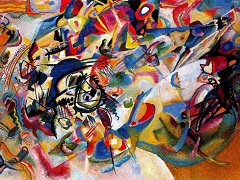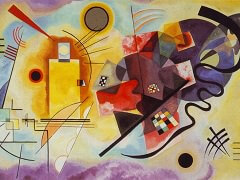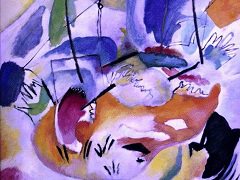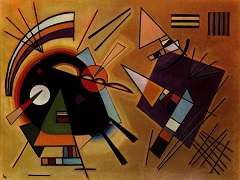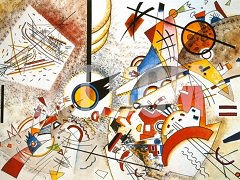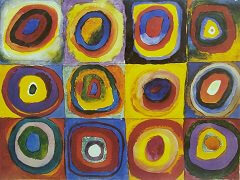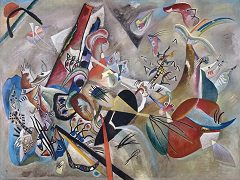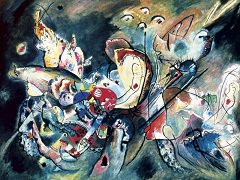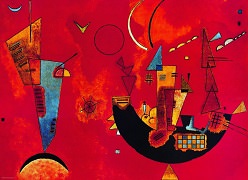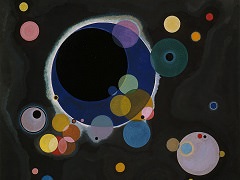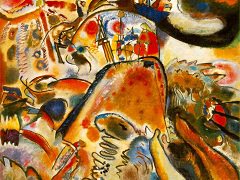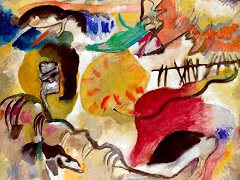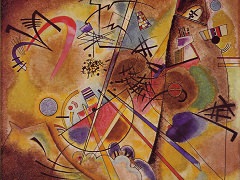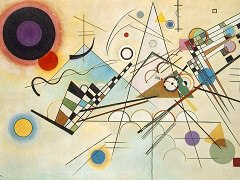On White II , 1923 by Wassily Kandinsky
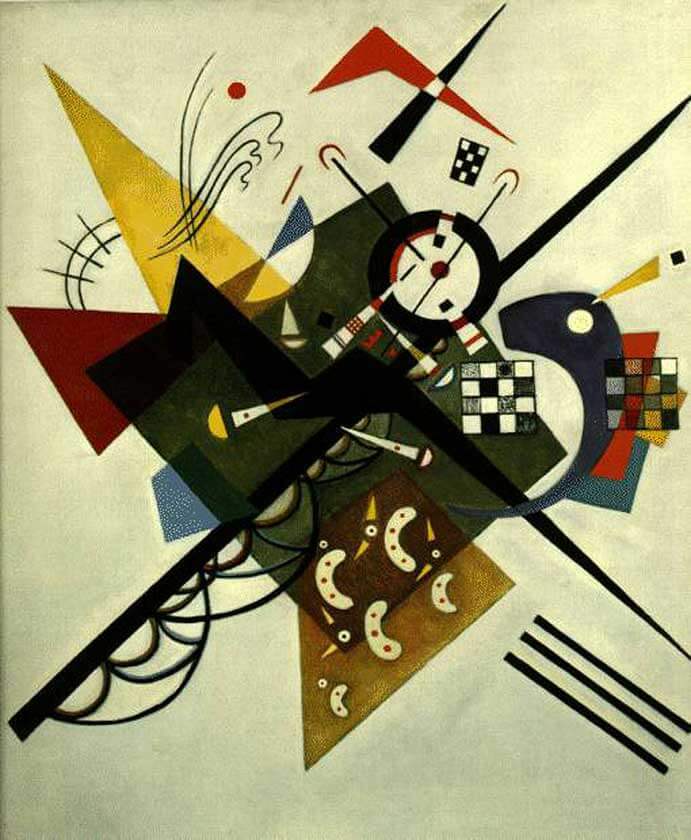
By far the majority of Kandinsky's graphic work originates from before 1913, but all through his life he continued to create woodcuts, drypoints, and lithographs - the most outstanding of which is entitled On White II, 1923, in which he used at least four stones and possibly one additional sprayed color.
As a printmaker he had an ardent passion for his metier, comparable to such masters as Vermeer or Rembrandt. In his book Point and Line to Plane Kandinsky quite often referred to the technical side of printmaking. His observations on lithography are quoted in the following:
Lithography is the most recent invention in the field of graphic art. It offers the highest flexibility and elasticity in handling."
The almost indestructible support on the one hand and the speed of production on the other correspond perfectly with the mentality of our time. Point, line, plane, black and white, works in color - everything can be obtained with the greatest economy. The lithographic technique (for example the flexibility while working on the stone, i.e., the easy way of putting the ink on it with any kind of tool; the almost unlimited possibilities for mits) corresponds in the highest degree with both the internal and the external necessities of today.
In addition to their more technical characteristic? Kandinsky also attributes special properties of a "socin value" to the three graphic methods. He believes, for ea ample, that etchings are aristocratic in nature because only a few excellent prints can be made from one plate and because each print turns out to be different from the others, so that each is unique. Woodcuts are more profitable and tend to be of equal quality, but colors can only be applied by using a complicated method. Lithography, on the other hand, can produce with the greatest speed an almost unlimited number of prints by a purely mechanical process. By increasing the use of color, a lithograph even comes close to a painting and, in any event, it represents a sort of substitute for an original picture. So the democratic character of lithography is clearly marked.

